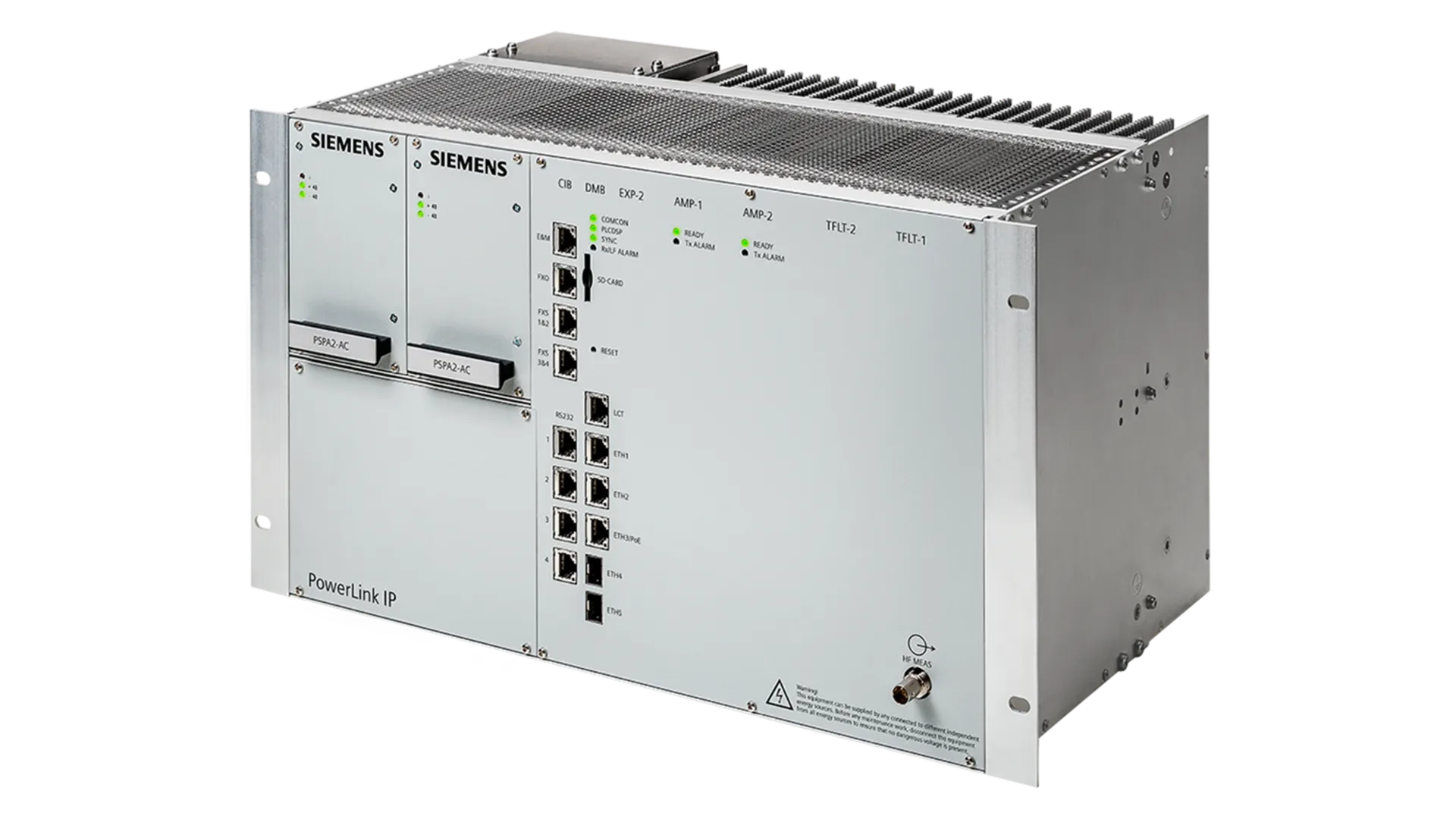


PowerLink IP is Siemens’ modern power line carrier (PLC) solution for digital high-voltage substations. It uses overhead high-voltage lines between transformer substations as a communication channel for data, protection signals, and voice — offering a cost-effective way to enable Ethernet/IP networking without needing full fiber connections everywhere.
Unlike traditional PLC systems that use narrow frequency bands (e.g. up to ~32 kHz) and offer modest data rates, PowerLink IP works with frequency bands up to 256 kHz, enabling up to ~2 Mbps per transmission direction. This makes it possible to replace several old PLC systems with a single PowerLink IP unit.
PowerLink IP is Siemens’ modern power line carrier (PLC) solution for digital high-voltage substations. It uses overhead high-voltage lines between transformer substations as a communication channel for data, protection signals, and voice — offering a cost-effective way to enable Ethernet/IP networking without needing full fiber connections everywhere.
Unlike traditional PLC systems that use narrow frequency bands (e.g. up to ~32 kHz) and offer modest data rates, PowerLink IP works with frequency bands up to 256 kHz, enabling up to ~2 Mbps per transmission direction. This makes it possible to replace several old PLC systems with a single PowerLink IP unit.
The architecture is packet-based and optimized for modern substation demands. It supports teleprotection via the integrated SWT 3000 system, with binary I/O or IEC 61850 GOOSE interfaces for protection devices. The system includes an Ethernet switch, multiple Ethernet interfaces (electrical/optical), and is designed for both LAN inside substations and WAN communications between them.
PowerLink IP supports flexible, asymmetric bandwidth usage and dynamic frequency allocation. It can adjust to noise conditions, use "notching" (i.e. blanking out certain sub-bands) to avoid interference, and negotiate with adjacent systems for frequency usage. These capabilities help to ensure efficient use of the HF band under varying environmental or interference conditions.
It can serve as either a primary communications link in locations without fiber, a backup to existing fiber-based or other comms links, or part of a migration path, allowing legacy devices (analog voice, older telecontrol interfaces) to continue working via gateway/router while integrating newer IP/Ethernet-based equipment. Traditional and PowerLink IP systems can coexist on the same line by dividing frequency bands.
Regarding environment & installation: the device is built for industrial/high-voltage environments, with attention to regulatory and safety standards. It provides web-based configuration & monitoring, SNMP integration for network management, alarm output, and remote maintenance options.
